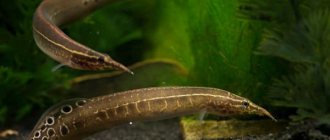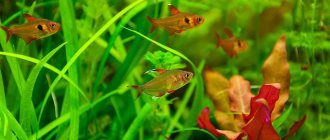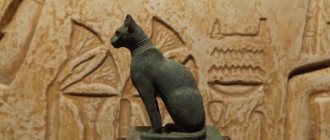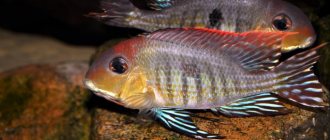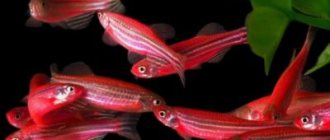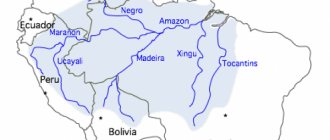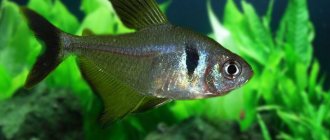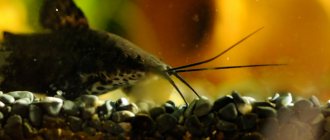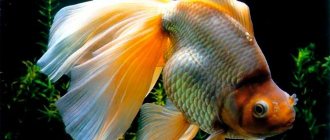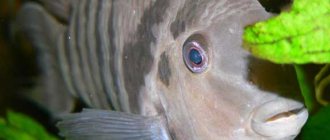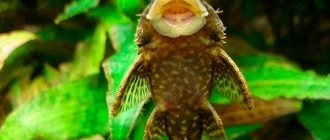Family/genus: macropodae/colias.
Aggressiveness: non-aggressive.
Lalius do not live long, only 2-3 years.
Compatibility of Lalius: with virtually all peaceful fish. You should not keep predatory and nimble fish.
The minimum volume of an aquarium for a pair of lalius is 20 liters. For a flock of 50 liters.
Comfortable water parameters for keeping: temperature 22-27 C, hardness up to 20, pH 6.5-7.0.
At the beginning of the article, let's put all the dots on Yo! The eternal reclassification of fish constantly brings confusion to the ranks of aquarists. Today the situation is this - all former Trichogasters, also better known as gourami , have been reclassified as Trichopodus. And all the colises, including the laliuses, became trichogasters. This is an insignificant thing for an amateur, but still parsley happens to these fish, friends.
Lyalius red neon
Amateurs continue to classify Lalius as colises. Therefore, in this article we will consider the red neon lalius to be a colosseum. There are three types of colias: Colisa fasciata, Colisa labiosa and Colisa lalia. And to completely confuse you, let’s add a fourth colisa - Colisa chuna, but for some reason it is commonly called honey gourami =).
So, red neon lalius is a selection, that is, an artificially bred morph of Colisa lalia. Moreover, all morphs of lalius are very variable and can have different tones and patterns. The photographs presented in this article are ideal. In reality, red neon lyalka can be anything, even gray and raspberry. This is explained by the desire of the offspring of the morph for a natural form.
As for historical data. The natural form of Lalius was described in 1822 by Scottish zoologist Francis Buchanan-Hamilton and first introduced to Europe in 1869. In 1874, it was brought to Paris for the famous fish maniac and aquarium pioneer Pierre Carbonnier, but a large supply of these fish was made by German companies only in 1903.
Next, let's move on to the practice and nuances of keeping fish. Lalius, and even more so red neon, are drop-dead beautiful, peaceful, interesting labyrinth fish. These South Asian beauties have various breeding morphs, not only RedNeon, there are simply neon, coral, rainbow, cobalt lalius. And all this beauty evokes a strong desire to immediately buy them for your aquarium!
However, we personally, FanFishites, cannot recommend these fish to everyone. These fish are certainly not for beginners. This position is due to the fact that, alas, lalius are not distinguished by good health, the fish are very timid, suspicious, and almost immediately become stressed.
To maintain them, it is necessary to create ideal conditions. The water should be soft and slightly acidic with a pH below 7. It is better to keep the water temperature around 27 degrees, that is, slightly higher than for most tropical fish. At this temperature, dolls will have less chance of getting sick.
Lyalius red neon
Definitely, everything in the aquarium should be in order with the nitrogen cycle . The slightest concentrations of ammonia, nitrite and an overdose of nitrates have an extremely painful effect on these delicate fish. The aquarium itself must have aeration and filtration. Every conscientious aquarist should always have a set of drop tests on hand, at least for nitrate and phosphate. Fortunately, they have now become inexpensive, there are no problems with their assortment and acquisition. For example, we can with a clear conscience recommend you the cool UHE drop tests, , but they are sold only online. In stores in your city - offline, you can find inexpensive Vladox tests . Friends, watch out for nitrogen compounds, keep them in check and everything will be fine for you and your pets.
It would be useful to use clean water supply for deep water changes and use preparations that neutralize harmful substances. For example, Tetra AquaSafe - it removes chlorine compounds, heavy metals + contains B vitamins, iodine and other aquarium goodies.
The aquarium itself should be decorated with thickets of plants; the fish feel more comfortable in them. Plants create shading areas in the aquarium, thereby imitating the natural habitat.
Otherwise the fish are unpretentious. Feeding them is not difficult. They will gobble up any branded food on both cheeks. We recommend using TetraMin - as the main diet and additionally food from the Color series, which enhances the color of the fish, for example, Tetra Rubin . It is ruby, because it can, in principle, be used as a basic food. It is not 100% focused on carotenoids.
Allow me to make a small note. Color series food - enhances the natural color of fish, as it is enriched with pigments such as canthaxanthin, astaxanthin . In fact, carotenoids are natural “coloring” substances. It is astaxanthin that gives plants their red-orange color, carrots are a prime example of this. Or, for example, have you ever wondered why flamingos are pink? Yes, that's exactly why. By eating plant and animal foods rich in carotenoids, the flamingo's plumage, which is initially white, gradually turns pink. The more birds receive this substance from food, the richer and redder the plumage becomes. If you look even deeper, flamingos eat the well-known brine shrimp - pink, saltwater crustaceans and also turn pink.
Actually, the same thing happens to fish if the food contains carotenoids. We also note that astaxanthin also has other beneficial properties - it is also an antioxidant. In general, we can say that carotenoids are beneficial not only for fish, but also for all aquatic organisms, even aquarium plants. The only thing is that everything should be in moderation and balanced. You need to understand that the color of the fish also depends on the state of health, environment, life circumstances (stress/spawning) and the characteristics of the aquarium lighting.
Actually, to summarize, the Color series food is good, but should not be a basic diet. Imagine what will happen to a person who eats only one beet all week =) It’s scary to imagine. The same goes for the fish... sorry, they start pooping cute pink poop.
In this matter, by the way, it is very important not to overfeed the fish, so as not to run into problems with the gastrointestinal tract. Feed the Lalius once a day, do fasting days. This will be one of the keys to success in their maintenance. It should be noted that when purchasing any dry food, you should pay attention to the date of its manufacture and shelf life, try not to buy food in bulk, and also store the food in a closed state - this will help to avoid the development of pathogenic flora in it.
Description
A representative of the labyrinth fish family, lalius, lives naturally in warm waters of Indonesia, India, and Bangladesh. These aquarium fish are also known as threadworms or dwarf gourami, but they are most often called by their Latin name Trichogaster lalius. In their natural environment, the fish are colored in red and silver-blue tones, and among the selected species there are even more exotic options with a body of neon, green, and coral colors.
Lalius are schooling fish that prefer to live in the company of their relatives even in an artificial environment. On average, it is recommended to keep 6-8 individuals at a time, which will require a tank of 60 liters or more. This compact fish grows up to 7.5-9 cm in length, has a body flattened at the sides, and a small, short tail. The fins of the lalius also look unusual - in males they are slightly extended back at an angle.
The color of males contains phosphorescent dots, which look especially impressive under artificial lighting.
The elongated body of the lalius is surrounded by fins, on the surface of which there are red spots. The head is silver-blue, brighter in the mouth area. The pectoral fin is replaced by elongated whiskers, which help the fish to navigate freely even in muddy waters.
When there is a lack of oxygen, laliuses switch from gill breathing to normal breathing, float up and gasp for air.
The behavior of the fish also looks quite attractive, especially for an aquarist who prefers pets with a peaceful disposition. In the natural environment, lalius encounter almost no dangers, living in shallow standing waters of rice fields, slow-flowing streams, and small lakes. Their behavior, formed by many years of habits, remains the same in a spacious aquarium. These fish are unhurried, slow, spend most of their time in dense bottom thickets and are afraid of noise or aggressive behavior.
Aquarium
For a couple, an aquarium with a capacity of 20 - 30 liters is quite enough. True, it is better to have 2-3 females per male, but this solution is less aesthetically pleasing, since the outfit of females, even during the mating season, is much more modest. The surface area of the aquarium is crucial - the larger it is, the better. This is due to the fact that they spend almost their entire life directly at the surface of the water. Here they look for food, fill their labyrinthine organ with atmospheric air, build their unique foam nests, and care for their offspring for some time.
Purely theoretically, the soil does not play any role for them. In principle, you can even refuse it, but the specular reflection of light from the bottom of the aquarium disorients the fish and introduces an element of nervousness into their behavior. Therefore, it is better to cover the bottom with at least a thin layer of coarse sand or fine gravel of dark shades.
Biologically, these fish are attached only to floating plants with finely dissected leaves. They like to rest in their thickets, and use individual fragments as a skeleton when building a nest. But limiting your choice only to such representatives of the aquatic flora is not entirely justified, because in this case the lower horizons of even a low aquarium will look empty. In addition, dense thickets of vallisneria, elodea, pinnate, and Thai fern can provide an invaluable service to a female who is tired of the demands of an overly annoying partner.
A dark background is preferable; it makes the fish look more contrasting and feel calmer. By the way, despite the fact that in natural conditions they usually live in reservoirs completely exposed to sunlight, they do not like bright light, trying to hide from it under clumps of floating plants, which play the role of a kind of light filter. Branched snags can be used as decoration. Various structures made of stones in an aquarium with these fish are not needed.
As already mentioned, the chemical composition of water is not critical. They feel equally comfortable in both soft and relatively hard, slightly sour or neutral water. When keeping these fish, the optimal temperature in the aquarium should not fall below 26 degrees.
Water parameters:
Temperature: 22 - 28° C pH: 6.0 - 8.0 Hardness: 15 - 19° dGH
Filtration with aeration are not necessary, but they prefer clean water and installation of equipment is still necessary. Keep water movement to a minimum. Water changes are carried out weekly by 1/4.
Aquarium Basics
Lalius in their homeland are able to survive in an unfavorable environment, but aquarium fish need favorable conditions. They were bred artificially, so they do not have strong immunity, they can quickly get sick, and in severe cases die.
By complying with the conditions of detention, you can be calm about the health of your pets and their offspring:
- Lalius are able to live in small aquariums: 10 liters for one fish, for a pair or a school of 5 you need 40 liters.
- Fish of this species do not cope well with strong water flow; there is no need to create currents when filtering.
- It is recommended to place the aquarium in a quiet place. Individuals are shy, cannot tolerate strong sounds, sudden movements, or fuss around.
- It is better to keep one male in one container. This will prevent fights between male representatives. The number of females may not be limited.
- To make the bright scales of the fish look beautiful, it is better to prepare dark soil for the bottom.
- Inhaling cold air damages the labyrinth apparatus, so you should not place an aquarium in a cool room.
- Fish love bright lighting; it makes their color stand out.
- Lyalius needs a lot of algae. They will hide there if necessary. They love free-floating plants, as they themselves spend a lot of time near the surface of the water. They are also needed for nest construction during spawning.
- Requirements - acidity pH 6.0-7.5, temperature + 23...+28 °C, hardness dH up to 20 °.
Maintenance does not require much cost or effort. Lalius show the ability to adapt to changes in conditions for the worse, but this should not be abused.
Spawning
You can follow this process without moving the lalius into another vessel. But this approach does not guarantee that the offspring will survive entirely; on the contrary, you can say goodbye to half the eggs. The male copes well with his functions and protects the nest, but cannot save all the offspring. The fry are not completely protected either. If you want to preserve the offspring of fish, it is better to place them in a separate aquarium.
By the behavior of the male, you can find out whether the pair is ready for spawning. Before this important event, the male begins to more actively create a place for future offspring. If you see parts of floating plants in the aquarium, you can move the fish to another place. The main thing to consider when preparing the spawning tank is that the water in it should be warmer than 28-30°C. You also need to turn off water filtration.
Spawning in Lalius begins after the completion of nest formation. While the female spawns, the caring father of the family places the eggs in foam and covers it with a layer of bubbles. It is important to remove the female from the aquarium after the entire process is completed. Her intervention will only distract the male from caring for the nest. The owner of the aquarium is only required to maintain the required temperature in the vessel. But you should not interfere with the male’s work in caring for the nest, otherwise he will destroy the eggs.
It is worth noting that Lalius are very prolific, so even if some of the offspring were not preserved, there will be many new residents in the aquarium. By the way, the fry have an excellent appetite; you need to always have food in the aquarium.
Kinds
Today lalius is presented in a fairly wide variety. Some forms have a natural color, while others were bred by breeders. As a rule, the most popular types are:
Lyalius red neon
Selective form. Males have a more pointed shape. They are distinguished by their bright, red-orange or deep blue color. In character they are no different from other species. They grow up to 7 cm, are shy, prefer dense vegetation;
Lalius blue dwarf
Attracts aquarists due to its small size. Males are larger and plumper. These fish have red and blue-green stripes running along the body. There is an expressive contrasting outline on the dorsal and anal fin. Compared to gouramis, they have blue scales, not spotted;
Main characteristics
The lyalius is small in size, no more than 6 cm. The body is flattened on the sides, oval, with a small tail, as well as fins of a peculiar shape, elongated posteriorly at an acute angle. The female is smaller, duller, and predominantly silver-gray in color. With her inexpressiveness, she makes a worthy background for bright, extraordinary males. The male representative is larger and more extravagant. The multi-colored color gives it a distinctive character; the presence of fluorescent dots makes it a worthy decoration for any underwater kingdom.
Living in nature in stagnant streams, small lakes, as well as irrigation waters of rice plantations, it acquired a calm, reasonable character. Slow, a little slow-witted. Likes to hide and not be in sight. Can't stand fuss, wasteful movements and loud sounds.
Like a real gourmet, he appreciates greenery and clean water, does not need bright lighting and, on the contrary, hides from it in dense thickets, reserving the right to make friends with precisely those neighbors whom he chooses.
Lyalius is a labyrinth fish, capable of breathing oxygen from the air due to the special structure of the respiratory system. That is why you can notice its frequent ascents to the surface to swallow doses of air. Under natural conditions, this feature allows you to catch midges, which helps you obtain adequate food for yourself.
Nutritional Features
Feeding the fish can be organized without unnecessary difficulties. Lalius readily eat live food and dry flakes. Feeding frequency is 1-2 times a day. Anything that is not eaten within the first 2-5 minutes must be removed from the tank. You can’t give food more often: fish are prone to obesity, it is recommended to give your pets fasting days every week.
Dwarf gouramis pick up food from the surface of the water. In order for them to eat normally, they need food that slowly soaks and settles to the bottom.
Flakes cope well with this mission; additionally they provide coretra, brine shrimp, and tubifex.
How and what to feed lalius
The owner should take care of a balanced and nutritious diet for his bright charges. The menu can be composed of live, frozen, plant foods. It is important to consider that lalius swallow most of their food from the water surface, so the best food for them is flake diets. They do not immediately dissolve and drown, floating on top for some time. But the product should not float for long, since uneaten particles begin to rot and decompose, polluting the aquatic environment.
Fast-sinking food is not suitable for these fish; lalius rarely sink to the bottom. If some of the food does settle, it is worth considering the envy of the cleaner fish - corydoras, which will clean the soil from food remnants. Lalius are gluttons and are able to absorb much more food than they need. Therefore, the owner should dose the food - this will prevent the fish from overeating.
Breeding and reproduction
When the body length reaches 4–5 cm, puberty occurs. Before spawning, the pair is fed generously with live food. After this, the pair is placed in a separate container of 15–20 liters. First the female, where she adapts for about a week, then the male is placed. Soft water with a neutral pH is suitable, although other values may be suitable. It is advisable to increase the temperature to 26–28 degrees.
If everything is correct, then after a while the male begins to build a nest. It builds a nest from foam and air bubbles, which are used to hold together parts of the floating plant. That is why it is necessary that the container contains living plants (riccia, duckweed, pistia), which will also serve as shelter for the female from the male. By the way, the signal for reproduction is a decrease in the water level, which is why a separate container will stimulate the reproduction of lalius. The nest covers about ¼ of the surface and is more than 1 cm high. Interestingly, the nests are quite strong and can survive for another month.
The fry need warm and moist air, so the aquarium or container is covered with film or glass. This is necessary for the fry to develop a labyrinthine organ.
After the nest is ready, the male begins to court the female. The female lays eggs (500–700 eggs), and the male immediately inseminates them. Lalius spawning occurs under the nest. Since the eggs are lighter than water, they float immediately. After the end of spawning, the male becomes on guard. After this, the female is removed, because the male begins to behave aggressively towards the female again. The fry appear within 36–48 hours. He spends a few more days in the nest. After 3-4 days, the fry begin to appear in the aquarium itself and swim on their own. The male catches them and spits them back into the nest. But the main thing here is not to overdo it; between the 5th and 7th day during spawning, the male needs to be removed, because he begins to eat the fry. So to speak, life came from the male, and it may end from him.
Since the fry is very small, it needs to be fed several times a day with small food, for example, ciliates. Check whether the fry have a full belly, since the main cause of death during this period is hunger.
After just 10 days, you can add brine shrimp and microworms to their contents. If the belly turns orange, it means they have started eating them; you can no longer feed them.
It often happens that some fry grow a little faster, so the fry need to be sorted, because larger individuals begin to eat small ones.
When the fry reach a size of 1 cm, they can already be fed flakes. From now on you need to change the water and add a filter. But even now they still need to be sorted by size. Characteristic stripes on the body allow you to distinguish males from females. Thus, you can start breeding Lalius, constantly sorting and separating large representatives, as well as males from each other.
How to distinguish a female from a male?
Determining the sex of Lalius is quite simple; they have well-defined sexual dimorphism. The main difference between a male and a female is size - males are much larger, 7-9 cm in length, females grow no more than 6 cm. In addition, the differences include body coloring. In males it is bright, with well-defined vertical stripes of blue and red on the body. With age, the anal and dorsal fins acquire an elongated shape.
Contents
There is a very common belief that aquarium fish are one of the most unpretentious pets, and caring for them takes almost no time. In fact, the majority of fish, especially the most beautiful and large ones, require rather specific conditions of detention. And the aquarium itself must be cleaned and washed regularly.
Therefore, many novice amateur aquarists who do not take this fact into account later face a number of problems. In order to avoid this, beginners need to start with fish species that are truly less demanding in terms of keeping conditions and are patient with some mistakes of an inexperienced owner. For example, for starters, you can purchase aquarium fish such as lalius.
Lalius are decorative fish of the labyrinth family. Their sizes usually do not exceed 6 centimeters. Aquarium fish Lalius have a beautiful bright color, which is more pronounced in males. An aquarium with a volume of about 20 liters is quite enough for a pair of lalius. If you want to purchase a flock of Lalius, where there will be several males, then the volume of the aquarium should be at least 60 liters.
This is because males will share territory and can be quite aggressive towards each other, especially during the spawning season. If the male Lalius have enough space, then the division of the territory will take place quickly and quite peacefully. Also, the aquarium should have a lot of plants, including floating ones, since lalius live mainly in the upper layers of water. In addition, the male will use plants when building a nest. You can put a small layer of soil or sand at the bottom. Lalius are quite tolerant of temperature changes, but it is still better to maintain a constant temperature of at least twenty degrees, approximately 22-28°C. It is better to cover the aquarium loosely with glass so that the fish do not catch a cold.
In general, lalius are very delicate fish, but lalius do not have any special diseases. The only problem is peptic ulcer disease. An ulcer appears on the pet's body, usually on the back, and in most cases this leads to the death of the fish. Experts disagree on the definition of this disease, most often it is considered to be tuberculosis. If you start treatment at the earliest stage, the likelihood of recovery is much higher.
It also sometimes happens that the lalius lies at the bottom of the aquarium. This can either be a manifestation of stress or a sign of illness. In any case, it is better for you to consult with a specialist who will tell you what medications and what treatment your pet needs. At this time, the fish must be placed in a separate container.
Compatibility
Lalius can live with other fish in the same aquarium, but with some reservations. Since this type of fish is quite shy, it is better to keep them in a small aquarium as the main inhabitant. The most preferred neighbors are:
- some types of barbs;
- rasboras;
- small carp and characins;
- iris;
- some species of catfish and tetras.
In a large artificial reservoir, other species of fish can be added to the lalius, which include dwarf cichlids and gourami. Small fish should choose neighbors with caution, as large, aggressive fish can simply eat them.
It is better not to keep Lalius with other types of labyrinth fish. Neighborhood with male cockerels and guppies can cause aggression, which makes the fish very timid. When adding neighbors to them, it is recommended to plant the aquarium quite densely with various plants .
Lalius fish: photo, description, types
This species of aquarium fish is native to Bangladesh, India, and Pakistan . Currently, they are widespread in the waters of Colombia, the USA and Singapore.
Lalius live in lakes, ponds, irrigation canals, slow-moving streams and even rice fields. In nature, they are omnivores and can feed on plankton, fry, insects and their larvae. These fish can even hunt insects that fly over the water. Looking for prey, the lalius freezes at the surface, and as soon as it sees an insect, it knocks it into the water, spitting a stream of water at the insect.
Lalius were brought to Europe in 1869, where they became popular aquarium fish. Large imports of this type of fish began by German companies only in 1903.
Varieties
There are several types of lalius , but the most popular among aquarists are the following:
- Neon red is a breeding form of fish that is distinguished by its bright red color. They gained popularity for their dwarf size, peaceful disposition, bright color and unpretentiousness. The Neon Red grows to 6-7 cm in length, has an oval body and a blue dorsal fin. The fish prefer abundant vegetation and can even live with aggressive fish of another species.
- The cobalt species is bred through selective breeding and is a schooling fish of dwarf size. They grow to only 6 cm in length and have a laterally compressed oval body. Males have a pointed body. The fish are distinguished by a cobalt blue iridescent color, which can take on a different shade in different lighting conditions. The elongated fins of cobalt specimens resemble threads. They can live in the same aquarium with various small fish.
- Lalius Colisa lalia is a very small fish, the length of which does not exceed 5-6 cm. Males are larger in size, blue iridescent in color and have elongated dorsal and anal fins. Females have rounded fins. Along the perimeter of the entire body there are red and bluish-green stripes, which also include the fins. The stripes of females are paler than those of males.
In artificial reservoirs, with good and proper care, lalius live from 4 to 5 years .
Diseases and prevention
Unpretentious fish can suddenly get sick and even die. The health of the inhabitants of the aquarium can be adversely affected by disturbances in living conditions, stressful situations, and errors in feeding.
Various harmful bacteria can cause diseases that are manifested by the appearance of dark spots , an increase in the size of the abdomen, and bloody discharge. With furunculosis, darkening of the color and redness of the pectoral fins occurs. Pseudomonosis is manifested by an enlargement of the abdomen and crumbling of scales.
Fish diseases are usually treated by raising the water temperature, various solutions and special medications. You can get rid of a huge number of fish diseases with the help of favorable aquarium conditions . These include:
- properly prepared water;
- regular cleaning;
- maintaining the required water temperature;
- good aeration.
A comprehensive feeding diet, which will include minerals and vitamins , will increase the fish’s immunity to various diseases.
Bright coloring, unpretentiousness and easy breeding make red, cobalt and other species attractive for keeping in an aquarium. By placing them together with friendly neighbors of various colors, you can admire the mesmerizing beauty and life of the inhabitants of the artificial reservoir.
Aquarium lalius
Features of maintenance and care
Lalius prefer to stay on the surface of the reservoir and can live in small aquariums. For one individual, a capacity of 10 liters is enough, however, for a school of fish it is preferable to prepare an artificial reservoir of about 40 liters. They need this volume so that they can hide more easily. Therefore, algae should float on the surface of the water, under which the fish will stand. In principle, the entire aquarium can be densely planted with plants.
Fish breathe atmospheric oxygen , so the temperature of water and air must match. A large temperature difference can negatively affect their labyrinth apparatus. The desired water temperature is from 23 to 28 degrees. The aquarium must be equipped with filtration, but in such a way that there is no strong current, in which the laliuses feel uncomfortable.
This type of fish is very shy, does not like fuss and loud sounds, so it is recommended to place the artificial pond in a quiet place. Males constantly fight with each other, so it is best to keep one male and several females. Several males can be kept together, but only in a large container planted with plants.
Feeding
Lalius are omnivores , so they can be fed dry, frozen, artificial and live food.
Since they feed on the surface of the water, the main diet of food can be flakes. Live food such as tubifex, brine shrimp, and coretra can be given to fish as a supplement. Pisces are prone to gluttony, which can lead them to obesity. They should not be overfed, and fasting days should be done once a week.
How to choose?
Choosing a lalius in a pet store is associated, first of all, with the problem of purchasing a healthy fish without pathologies, parasites and diseases. The main rule here is the choice of young individuals. Do not be seduced by the beauty of a large male - most likely, this fish will live no more than 1 year. And if you take a young lalius, he will be able to please his owners for 2-5 years, depending on the conditions of detention.
In addition, large fish may not produce offspring, and if breeding is planned, this should also be taken into account.
When choosing a place to buy lalius, it is better to give preference to a pet store that has the necessary certificates and clear justification for the origin of the live product. Do not fall for tempting advertisements for selling pets with direct deliveries from Indonesia or India. Such fish can be infected with parasites; adding an exotic lalius that has not passed quarantine into a community aquarium is especially dangerous.
It is worth paying attention to the appearance of the fish. Peeling scales, cloudy eyes, torn or whitish fins are a reason to refuse to purchase an individual. But there is no need to worry about the fish being slow or gasping for air. This behavior is quite typical for Lalius.
Feeding
Lalius are not picky about food and are practically omnivorous. In nature, they feed on plant food and small larvae. The best way to feed your fish is:
- Daphnia;
- bloodworm;
- cyclops;
- tubifex;
- artemia;
- koretra.
Ready-made dry flakes or granules are suitable as food. The fish are fed once a day. At the same time, they arrange a fasting day once every 7 days. Lalius are practically insatiable, so it is important not to overfeed these underwater pets .
Male and female
Lalius have quite clear sexual dimorphism, so let's look at the difference between a female and a male. The male lalius is slightly larger in size (grows up to 7 cm), and also has a bright color. The female lalius, on the contrary, is smaller in size and also has a grayish tint, the abdomen is fuller, the female is more timid. What is special is that in an adult male the ends of the dorsal and anal fins lengthen, and the dorsal fin is more pointed. But when determining the difference, the key factor is still the color.
Other colors of lalius
- Red (bright red body, bright blue dorsal fin)
- Cobalt (uniform turquoise color)
- Green (blue-green color of the whole body)
- Red neon (red shiny body color)
- Iridescent (irridescent red-violet tones)
All color morphs belong to the same species and are easily crossed with each other, but it is better not to make such crosses, but to breed pure lines of Lalius, because offspring from crossbreeds are significantly worse in color than the original forms.
Natural habitats
The homeland of Lalius is India, with the most numerous populations found:
- In the state of Assam.
- In the state of Arunachal Pradesh.
- In the state of Bihar.
- In the state of Uttarakhand.
- In the state of Manipur.
- In the state of Uttar Pradesh.
In addition to India, laliuses live in Bangladesh, Pakistan, Nepal and the Republic of Indonesia. There is information that this species appeared in Singapore, Colombia and the USA. The favorite habitats of this amazing fish are river inlets, overgrown with dense aquatic vegetation.
Interesting fact! These fish are not afraid of dirty water, so they live in shallow reservoirs well warmed by the sun's rays. These can be rivers, just streams, ponds, lakes, irrigation canals, rice plantations, etc.
Lalius are able to breathe not only with gills, but also with a unique labyrinth organ, which allows the fish to breathe ordinary air.
Lyalius in an aquarium. Maintenance, reproduction, what to feed and compatibility of Colisa lalia.
